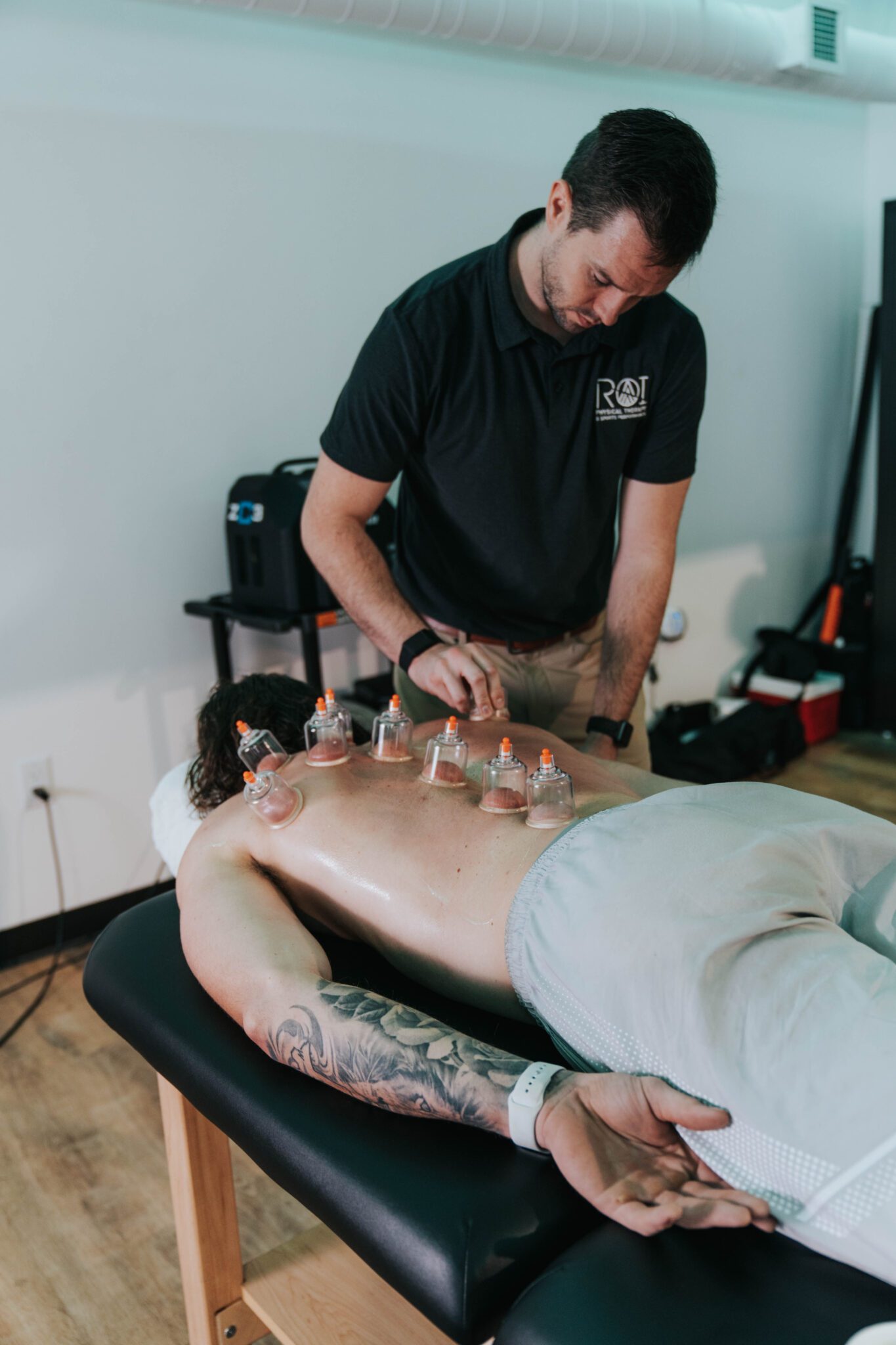Fitness, sports, and training are all pathways to achieving better health. However sometimes our bodies can burn out; injury, fatigue, or soreness can plague athletes of all levels. Fortunately, the world of sports therapy has developed ways to help athletes deal with acute or chronic injuries or other issues. Sports therapists can work to create a tailored program for an individual, which can help bring them back to safely and efficiently performing in their sport again. Therapies like this can help athletes with preventing further injury and improving performance. Some methods of sports therapy include hands-on techniques like massage, therapeutic training such as functional retraining, endurance training, and dynamic strength training, and other techniques such as ice, heat, taping, and electrical stimulation. Cupping therapy—technically known as myofascial decompression—is a method used by athletes for its many benefits. Read on to learn more about cupping therapy.
How it works: The process of cupping is interesting. Cups made of plastic, glass, bamboo, or ceramic are placed on the skin to create suction. These cups can be positioned on an athlete’s back, shoulders, stomach, legs, or any muscle group that they can attach to. The negative pressure created by the suction draws the skin into the cups—this is the myofascial decompression part. The muscles are lifted and blood is drawn to the area. Dry cupping is done with skin being pulled into cups and held in place for 5 to 15 minutes. Cups can move over the skin (dynamic cupping) or stay in place (stagnant cupping).
Many benefits: While many athletes choose to try cupping for their muscle soreness, it’s been shown that there are many other benefits of this kind of therapy.
- Increased circulation. Increased blood flow to an area—achieved by cupping—can help to relieve muscle tension, reduce the appearance of cellulite, and promote cell repair.
- Decreased toxins. We have organs that are responsible for removing toxins from our body, but cupping can also help with this process. The techniques in cupping can help flush toxins from the body through the lymphatic system.
- Reduced scars and stretch marks. The increased blood flow, better lymphatic circulation, and decreased fluid in your body as a result of cupping can help to reduce the appearance of scars or stretch marks.
- Improved varicose and spider veins. Sometimes veins in the legs don’t do their job of pushing blood through effectively. Cupping can help by bringing better blood flow to problem areas.
- Better digestion. Because it engages the parasympathetic nervous system, cupping helps to increase blood flow to the body’s digestive tract. Cupping done on the abdomen can stimulate your organs, aiding in digestion.
- Better athletic performance. Cupping can help athletes by relieving pain, by reducing muscle tension, and by increasing range of motion.
Does it hurt? The process of cupping should not be painful. There could be some discomfort in a session, but most athletes note the technique feels similar to a massage. Post-cupping, athletes may have the red circles, marks left by the suction of the cups. However, this is just temporary. The circles usually fade after a few days.
Where can I get cupping? Cupping should only be done by a trained and licensed practitioner. The sports therapy team at ROI can help. ROI strives to help athletes in any sport to discover the best techniques of sports therapy to employ. Cupping can be just one of the ways to get an athlete back to or keep an athlete in great health.
How long is a cupping session? It depends. A typical session can usually last from 15 to 25 minutes. Treatments can be done daily, a few times a week, or weekly, depending on the athlete’s needs.
Are there risks involved with cupping? Again, cupping should be performed by a qualified professional in order to ensure a safe treatment experience. Some athletes may experience mild flu-like symptoms, which can be indicative of the body detoxifying post-treatment. Athletes with any medical conditions should disclose all conditions to their cupping practitioner. Be sure to inform your practitioner of medications and supplements you take as well. Consulting with your doctor before any sports therapy treatments is always a good idea.
Is cupping right for me? Talk to a sports therapist to explore some of the great ways you can improve your health and performance. Cupping can be part of a healing journey for many athletes.
At ROI, trainers focus on the movement system—the collection of cardiovascular, pulmonary, endocrine, integumentary, nervous, and musculoskeletal systems—that interact and move the human body. The goal is to help athletes to move better and to reach top performance level. Every athlete’s rehab and exercise program is individually tailored with the movement system and individual goals in mind.
Whether you’re trying to recover from an injury, managing chronic pain, or simply aiming to improve your health, the team at ROI is ready to help you. Whether it’s cupping, massage, or other techniques, the staff at ROI will help to provide top quality care so that you can achieve your ideal results. Learn more about ROI’s sports therapy services, and reach out at 512-962-9141.

